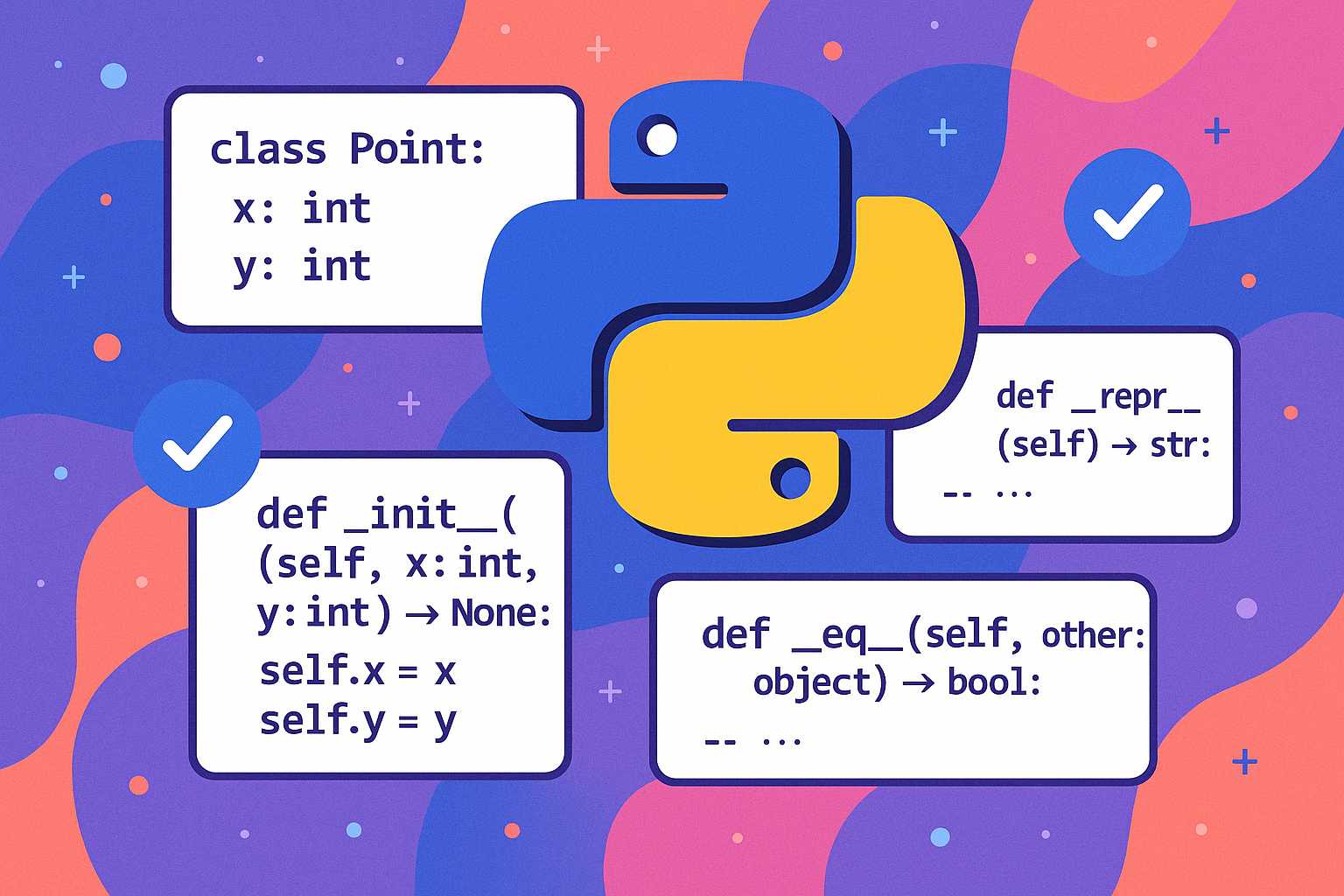Python 3.7 introduced a feature that quickly became beloved among developers: the dataclasses module. If you’re tired of writing repetitive __init__, __repr__, and comparison methods just to manage simple data containers, dataclasses will be your new best friend.
Let’s walk through what dataclasses are, why they matter, and how you can harness their capabilities for cleaner, more productive code!
What is a dataclass?
At its core, a dataclass is just a class—but with less work for you. When you use the @dataclass decorator, Python auto-generates many of the "dunder" (double underscore) methods that you’d otherwise have to write by hand—like __init__, __repr__, and __eq__.
Here’s a quick example:
from dataclasses import dataclass
@dataclass
class Book:
title: str
author: str
year: int
With just these few lines, you get a class that:
- Initializes all the fields for you
- Nicely formats the string representation
- Allows you to compare equality between instances
Why Use Dataclasses?
- Less Boilerplate: No more hand-writing constructors or representations!
- Type Safety: The class syntax encourages proper type hinting, increasing code reliability.
- Mutability Control*: Want immutable data structures? Set
frozen=Truein the decorator. - Flexibility: Features like default values, field customization, and post-initialization hooks make dataclasses surprisingly versatile.
Real-World Example: Immutable Configuration
Suppose you need an immutable config object:
from dataclasses import dataclass
@dataclass(frozen=True)
class Config:
api_key: str
timeout: int = 30
Config instances are now hashable (usable as dict keys or set elements) and cannot be changed after creation—that’s a win for many scenarios!
Advanced Features
- Default Factories: For mutable default fields, use
field(default_factory=list). - Post-init Processing: Define a
__post_init__method for validation or computed fields. - Auto-Generated Ordering: Add
order=Trueto auto-generate all the comparison dunder methods based on field definitions.
Conclusion
If you haven’t tried dataclasses yet, give them a spin! They’re a simple way to reduce boilerplate, improve readability, and make your code more Pythonic.
Want to dig deeper? Check the official documentation and start shaving hours off your data class creation workflow today!


Leave a Reply